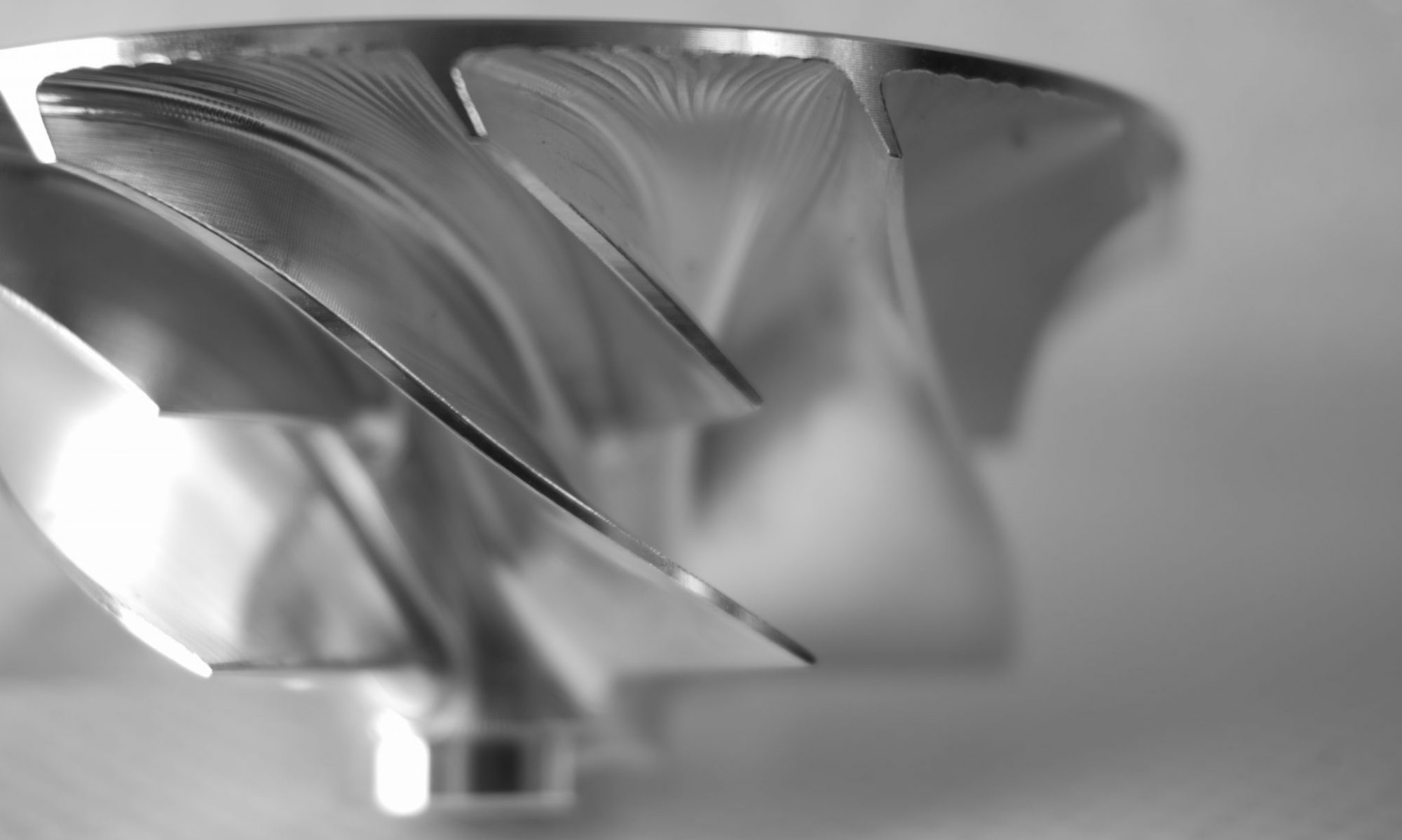A pair of turbochargers mounted to an Inline 6 engine in a dragster. A lag is sometimes felt by the driver of a turbocharged vehicle as a delay between pushing on the accelerator pedal and feeling the turbo kick-in. This is symptomatic of the time taken for the exhaust system driving the turbine to come to high pressure and for the turbine rotor to overcome its rotational inertia and reach the speed necessary to supply boost pressure. The directly driven compressor in a supercharger does not suffer this problem. (Centrifugal superchargers do not build boost at low RPMs like a positive displacement supercharger will). Conversely on light loads or at low RPM a turbocharger supplies less boost and the engine is more efficient than a supercharged engine.
Lag can be reduced by lowering the rotational inertia of the turbine; for example, by using lighter parts to allow the spool-up to happen more quickly. Ceramic turbines are a big help in this direction. Unfortunately, their relative fragility limits the maximum boost they can supply. Another way to reduce lag is to change the aspect ratio of the turbine by reducing the diameter and increasing the gas-flow path-length. Increasing the upper-deck air pressure and improving the wastegate response helps but there are cost increases and reliability disadvantages that car manufacturers are not happy about. Lag is also reduced by using foil bearings rather than conventional oil bearings. This reduces friction and contributes to faster acceleration of the turbo’s rotating assembly. Variable-nozzle turbochargers (discussed above) also reduce lag.
Another common method of equalizing turbo lag is to have the turbine wheel “clipped”, or to reduce the surface area of the turbine wheel’s rotating blades. By clipping a minute portion off the tip of each blade of the turbine wheel, less restriction is imposed upon the escaping exhaust gases. This imparts less impedance onto the flow of exhaust gases at low RPM, allowing the vehicle to retain more of its low-end torque, but also pushes the effective boost RPM to a slightly higher level. The amount a turbine wheel is and can be clipped is highly application-specific. Turbine clipping is measured and specified in degrees.
Other setups, most notably in V-type engines, utilize two identically sized but smaller turbos, each fed by a separate set of exhaust streams from the engine. The two smaller turbos produce the same (or more) aggregate amount of boost as a larger single turbo, but since they are smaller they reach their optimal RPM, and thus optimal boost delivery, faster. Such an arrangement of turbos is typically referred to as a parallel twin-turbo system.
Some carmakers combat lag by using two small turbos (such as Kia, Toyota, Subaru, Maserati, Mazda, and Audi). A typical arrangement for this is to have one turbo active across the entire rev range of the engine and one coming on-line at higher RPM. Early designs would have one turbocharger active up to a certain RPM, after which both turbochargers are active. Below this RPM, both exhaust and air inlet of the secondary turbo are closed. Being individually smaller they do not suffer from excessive lag and having the second turbo operating at a higher RPM range allows it to get to full rotational speed before it is required. Such combinations are referred to as a sequential twin-turbo. Sequential twin-turbos are usually much more complicated than a single or parallel twin-turbo systems because they require what amounts to three sets of pipes-intake and wastegate pipes for the two turbochargers as well as valves to control the direction of the exhaust gases. An example of this is the current BMW E60 5-Series 535d. Another well-known example is the 1993-2002 Mazda RX-7. Many new diesel engines use this technology to not only eliminate lag but also to reduce fuel consumption and produce cleaner emissions.
Lag is not to be confused with the boost threshold; however, many publications still make this basic mistake. The boost threshold of a turbo system describes the minimum turbo RPM at which the turbo is physically able to supply the requested boost level. Newer turbocharger and engine developments have caused boost thresholds to steadily decline to where day-to-day use feels perfectly natural. Putting your foot down at 1200 engine RPM and having no boost until 2000 engine RPM is an example of boost threshold and not lag.
Electrical boosting (“E-boosting”) is a new technology under development; it uses a high-speed electrical motor to drive the turbocharger to speed before exhaust gases are available, e.g. from a stoplight. The electric motor is about an inch long. [4]
Race cars often utilise an Anti-Lag System to completely eliminate lag at the cost of reduced turbocharger life.
On modern diesel engines, this problem is virtually eliminated by utilising a variable geometry turbocharger.

